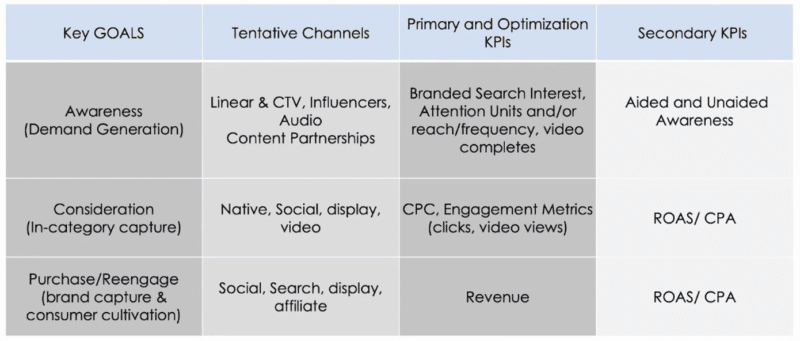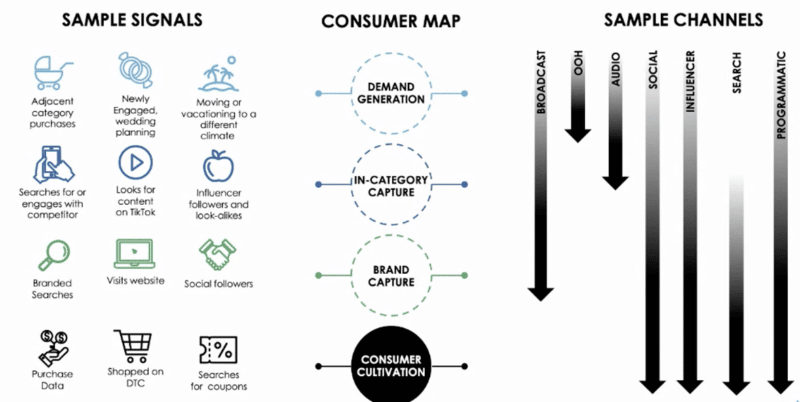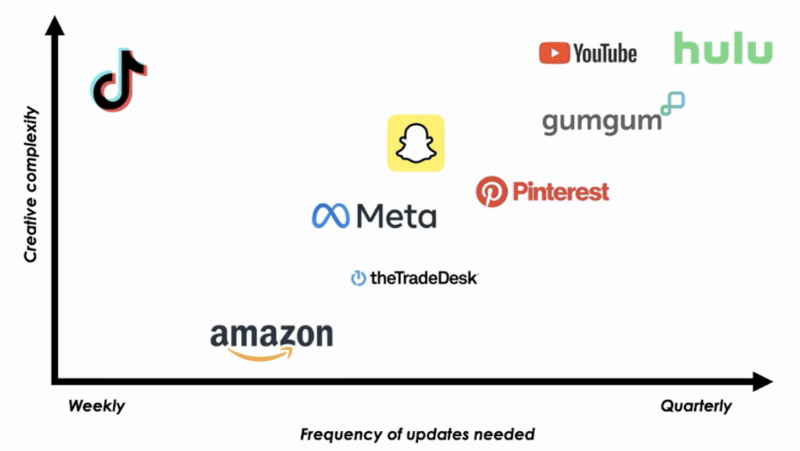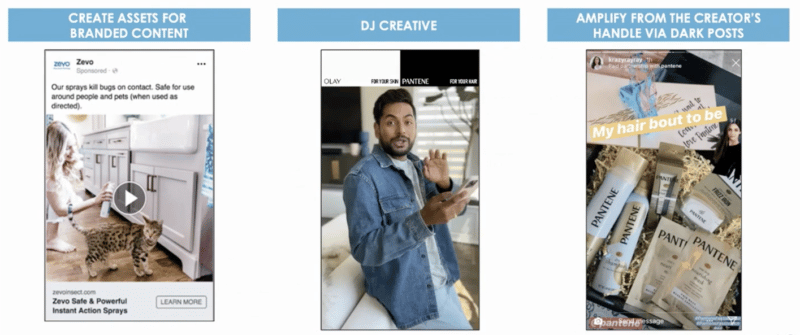Search is amazing – and there are compelling reasons why it is the cornerstone of all of our media plans:
- It’s extremely targeted, reaching exactly the people who are looking for our content, so they can be served with highly targeted ads.
- It’s highly transparent – you can see the exact performance metrics.
- It’s very measurable, especially when you use a tool like Google Analytics.
Of great value to many, the creative needs are far less demanding. It helps not to worry about images, video assets or animations. Clients love it for these reasons, too.
Especially when considering last-click attribution and return on ad spend (ROAS), search is always going to over-index as one of the stronger performance channels.
But after you master search, what’s next?
Working with brands in this changing digital landscape means you need to:
- Consider that your search campaign will hit efficiency limits.
- Determine how to scale at the right spend levels.
- And more so, explore how to reach new audiences.
Younger audiences, particularly, are searching very differently. While they are still on Google and Bing, they’re also looking at TikTok, YouTube or Instagram, depending on the search query.
Foregoing the funnel
To go beyond the traditional strategy, it’s time to shift our thinking beyond the traditional marketing (purchase) funnel and into signal planning, centered more around the consumer than the marketer’s needs.
Focusing on a consumer map helps us to better identify our audiences at their individual path to purchase based on the signals they provide back to us.

Within this map, your active consumers sit in the middle, and that is where your first dollar should go.
As you expand beyond active consumers into those that are aware, in-category or general demand generation, the signals you get from channels are weaker.
While you’ll spend less in those areas, you can still reach new audiences. This is an important framework as it maximizes the inner circles with slow expansion while focusing on ROAS.
Building on this consumer map, the next step is to develop a custom measurement framework to identify key goals, tentative channels, and primary and secondary KPIs.

Looking at your brand’s need for demand generation, for example, you might decide that potentially successful channels for your media efforts are linear and CTV, influencers, and audio content partnerships.
Track KPIs beyond just reach and frequency, such as branded search interest, which is basically search impressions on your branded keywords.
KPI is valuable because it can have the halo effect of new channels by improving your search spend and your search efficiency. This will also impact organic traffic, so you can quickly get people who are aware to your website, knowing that they’re really engaged.
Building a measurement plan
From here, examine how best to measure success. There are four basic options – with varying levels of complexity – that can be tailored to your media mix and budgets.
- Data visualization and reporting.
- Platform-based attribution.
- Incrementality testing.
- Media mix modeling.
Most clients, depending on campaign needs, will only rely on two or three of these.

As a baseline, ensure you have clear reporting automation, ideally in a dashboard to review and analyze real-time performance.
After graduating from that, you might look at platform-based attribution (i.e., the Campaign Manager 360 Model), where you can think a little bit more about consideration tactics.
If your campaign is focused on awareness, you can also look at options like incrementality testing. For instance, you’re going to launch a new channel, and it’s more upper-funnel (like YouTube or CTV), you might only go live in a few key markets.
Comparing the success of these efforts to markets where you weren’t live will give you some scientifically proven data to show what’s working. You can use that as a guide to scale and go larger.
Lastly, when sophisticated enough, look at media mix modeling or multi-touch attribution.
Test, test and test
Likely the most important step in the process is focused on the testing plan, which is critical to driving more rigor into your measurement strategy. The testing plan will ideally include:
- Test details.
- Learning objectives.
- Test length.
- Run dates.
- Primary and secondary KPIs.
- Channel.
- Intended action.
- Conflict.
- Results.
Picking platforms
With the measurement plan locked in, it’s time to choose the channels or platforms that make the most sense for your campaign.
To do this, take the various stages represented in the consumer map and line them up with the sample signals you see from your consumer behaviors.

Staying with our previous example of demand generation, you might line that stage up with signals such as adjacent category purchases, wedding planning, or moving to a different climate.
Many channels can run across all stages of the consumer map, but we know which channels can be full-funnel and prioritize those based on budget and what best suits our particular portion of the consumer map.
In addition, look at platforms against the consumer behavior to prioritize areas of action.

On a spectrum that ranges from “action” to “entertainment” (with a range of “education” somewhere in the middle), use more common consumer behaviors to help guide channel selection.
Based on the consumer’s mindset, you can also get cues that inform creative decisions and which platform will have the right ROAS. This is another way to think about scaling beyond search.
Creative is critical
Even with the best marketing strategy, targeting and measured framework, if you’re not employing the proper quality and quantity of creative (or not leveraging the same creative all the way across the funnel), your campaign won’t be successful.

Knowing the best creative decisions to make can be informed by determining how complex the creative needs to be.
While virtually every brand is currently interested in TikTok (for good reason), the best practice on that channel calls for creative swaps nearly every week. Most brands are simply not “creatively ready” to meet that production schedule and associated costs.
In the case of CTV, like YouTube and Hulu, the refreshes are not as frequent, but the creative has to be of very high quality.
Channels like programmatic or Meta, on the other hand, require fewer updates (monthly/bi-monthly) and can suffice with slightly lower creative complexity. Of course, these depend on budget and audience size – there are trade-offs.
It’s also increasingly important to consider the creators you can partner with and how they can be used for ads. Especially on channels like Meta and TikTok, influencer assets can be wildly successful and highly cost-effective.

There are different ways to see a positive outcome, too. In addition to branded posts where you simply use the creator as an extension of our creative team, you can amplify straight from the influencer’s handle. This usually gets the best CTA, as you can edit the caption to drive action.
Somewhere in between, there is also a lot of success with “mashups,” where a creative team takes assets already created by the influencers and parlays them into something that can have other points of differentiation or various experiences to best resonate with your diverse audiences.
Cohesive touchpoints
The final consideration in terms of scaling beyond search is making sure the campaign is cohesive and integrated.
Ensure that the whole marketing ecosystem is fully functional and primed to be successful in working behind the media KPIs that you’ve established with your client.

There is more detail to consider, especially as variables specific to your campaign come into play, but these basic steps will help you to scale up beyond Google and Bing while keeping the business focused on ROAS.
Watch: Tik Tok, Facebook, and beyond: Driving ROAS outside of Google and Microsoft
Below is the complete video of my SMX Next presentation.
The post TikTok, Facebook and beyond: Driving ROAS outside of Google and Microsoft appeared first on Search Engine Land.
via Search Engine Land https://ift.tt/LuDVRZS

No comments:
Post a Comment